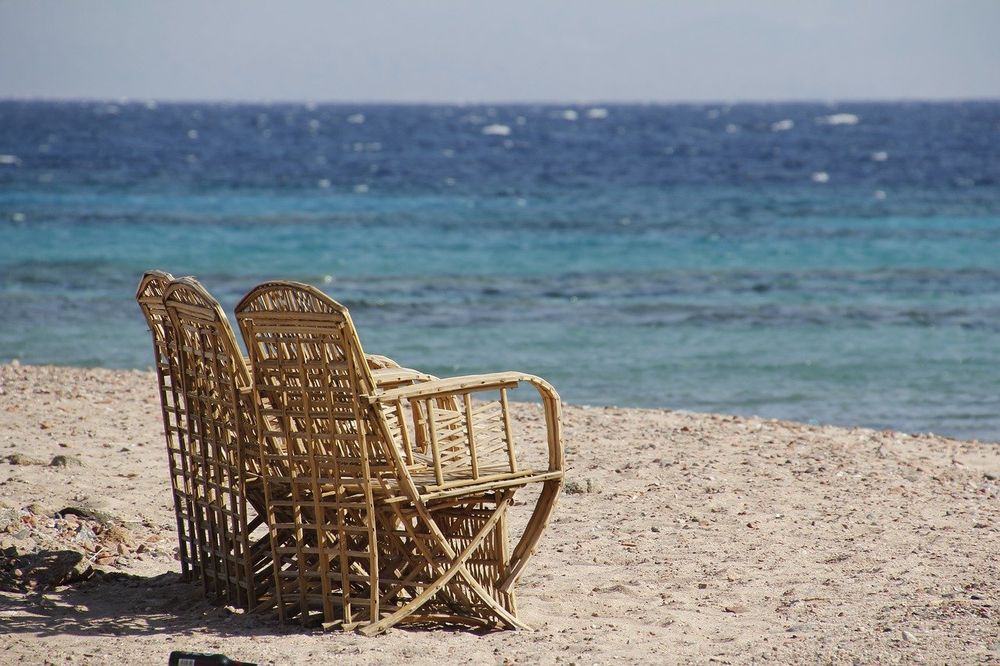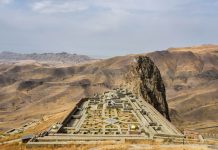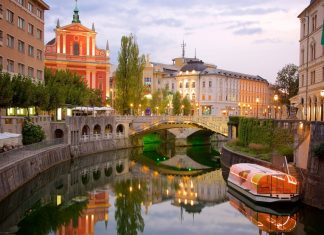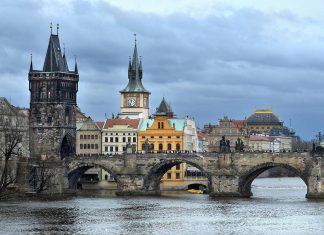The island of Taiwan is located in the Western Pacific between Japan and the Philippines off the southeast coast of China , from which it is separated by the Taiwan Strait . With a total area of about 36,179 square kilometers, Taiwan is 394 kilometers long and 144 kilometers wide at its widest point.
High mountains over 1,000 meters constitute about 31 percent of the island’s land area; hills and terraces between 100 and 1,000 meters above sea level make up 38 percent; and alluvial plain below 100 meters in elevation, where most communities, farming activities, and industries are concentrated, account for the remaining 31 percent.
Taiwan’ s most geographic feature is its 270-kilometer central mountain range, which has more than 200 peaks over 3,000 meters high. At 3,952 meters, Mount Jade is the highest peak in East Asia . Foothills from the central mountain range lead to tablelands and coast plains in the west and south. The eastern shoreline is relatively steep, and mountains over 1,000 meters high dominate the island in the north.
Crossed by the Tropic of Cancer, Taiwan has a subtropical climate with the exception of it’s extreme southern tip, which is tropical. Warm ocean currents give Taiwan a climate conducive to the growth of lush vegetation and two or three rice harvest per year. With an average annual precipitation of 2,471 millimeters, rainfall is abundant. However, the distribution of water resources is uneven, making the water available for use per capita low. Thundershowers and the occasional typhoon bring heavy downpours in the summertime, whereas November through February is Taiwan’ s driest period.
Summers are long and humid, while winters are short and usually milk. During the coldest months, snow is visible on the island’s higher mountains. The average monthly temperature in the lowlands is 16° in the winter and ranges between 24-30°C the rest of the year.
Taiwan’s subtropical climate is home to an abundance of diverse plant life, including low altitude flora closely related to that found on southern China, mountain flora similar to that of western China, and high alpine flora resembling that of the Himalayan region. Acacia is ubiquitous in the lower hills, and bamboo groves and forest are found throughout central and northern Taiwan . Native plant species are numerous, accounting for roughly 40 percent of Taiwan’ s total vegetation.
The languages and dialects spoken in Taiwan have their origins in the Austronesian and Han lingual systems. The Austronesian languages are spoken by Taiwan’ s indigenous peoples, while most common Han dialects – Minnanese and Hakka – are primarily used by those whose ancestors immigrated from China’ s Fujian and Guangdong Provinces , respectively, four centuries ago.
Taiwan represents three major climatic zones and its diverse topography have endowed the island with a wide range of flora and fauna. Some 60 species of mammals, around 500 species of birds (40 percent of which are resident), 90 species of reptiles, 30 amphibian species, nearly 150 species of freshwater fish, and 17,600 named insect species, (including 400 butterfly species), are known to exist in the Taiwan area. Monkeys, deer, wild boars, snakes, panthers, wildcats and bears are some of the types of animal life in Taiwan .
The island is also famous for the richness and diversity of its plant world, with some 4,021 species classified to date. The mountains are home to coniferous and deciduous trees at the elevation of 2000-3000m (6,500 – 10,000 ft), above this elevation only coniferous trees are found, particularly the cypress. Many tropical and subtropical forests are found at the lower elevations (sea level to 2000 m).
The Formosan Landlocked Salmon which inhabits the cold streams in the high mountains is a result of the alternating effect of the geological changes that occurred during the Ice Age. The Wulai rhododendron is one of the plants peculiar to Taiwan .
Taiwan practices freedom of religion, generously accepting foreign religious ideas while honoring traditional beliefs: even within the same family, it is common for different faiths to exist. As a result, Taipei has welcomed the development of many different religions.











